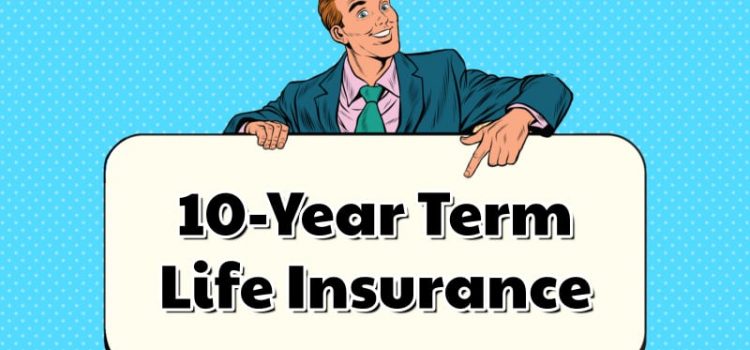You probably know that you can opt between 10, 15, 20, 25, and 30-year terms of most insurance providers if you consider buying Term Life Insurance.
Having various options for term insurance and its affordability makes it popular in the world of insurance.
However, with many insurance buyers, having various options leaves them confused. To avoid this, we are presenting you with this brief guidance regarding 10-year term life insurance. To help you decide whether a 10-year term policy is suitable for you or not.
How Is A 10-Year Term Different From Other Plans?
A 10-year term life insurance policy provides coverage for ten years. During this period, the premium remains the same.
As long as the policyholder pays the premium on time, the insurer cannot raise the premium for any cause and cannot change or cancel the insurance policy.
At the end of the term, unless you do a renewal of the policy or the policy converts to a permanent insurance policy; the coverage will end, and you cannot recover premiums. The expense of 10-year term insurance is less than the 15, 20, 25, or 30-year term policy; the insurance company is at risk for ten years of paying a death benefit.
Is 10-Year Term Beneficial For You or Not?
A 10-year term insurance policy is one of the simplest forms of term insurance. The insurance provider agrees to pay a death benefit if the policyholder dies within the contracted term, i.e., 10-years in exchange for a premium.
The beneficiary will get a death benefit in a lump-sum payment that is typically tax-free.
There are four options to consider when a term policy is about to end.
- Renewal of the policy but with a higher rate.
- Convert the full coverage or some of it to permanent insurance.
- Cancel the policy and buy a new policy.
- Do nothing and allow the policy to end.
Since individuals buy life insurance to cover their financial needs, those who buy 10-year term life insurance usually hope to get temporary coverage or seek to use the policy as a bridge to another type of policy in the future.
What Financial Risks can Be Tackled By A 10-Year Term Policy?
- Strategy to cover a mortgage loan – If your home mortgage has ten or less than ten years remaining, a 10-year term policy is the best way to pay off if you passed away unexpectedly during the term of the policy.
- Develop a coverage bridge until retirement – Many individuals do not want to carry a lot of debt with them when they hit retirement. If you are about to retire within 5 or 10 years; a 10-year term policy can easily bear your debt until you hit retirement and do not require as much life insurance as you do now.
- Smokers who plan to leave – If you are a smoker and decided to quit, permanent life insurance premiums will likely be out of access until at least a year of not smoking. A 10-year term insurance policy acts as the best alternative till the one-year gap of not smoking. Once you have gone a year without smoking, buying life insurance will cost half as it was before.
- Cover a significant amount of debt – We are all likely to purchase luxury and expensive things. A 10-year term life insurance policy is the best option to cope with a costly thing’s debt.
Perks Of a 10-Year Life Insurance Policy
The 10-year term life insurance is the best economical option to get coverage for a certain period.
-
Easy to Bear
As term life insurance is a competitive niche in the life insurance industry, so this 10-year term policy is an accessible strategy to cope with a financial risk of any magnitude.
-
Customize the Policy
Although term insurance is simple and easy to understand; still, most insurance providers offer optional riders that enable a policyholder to customize their coverage and add more perks to their policy.

